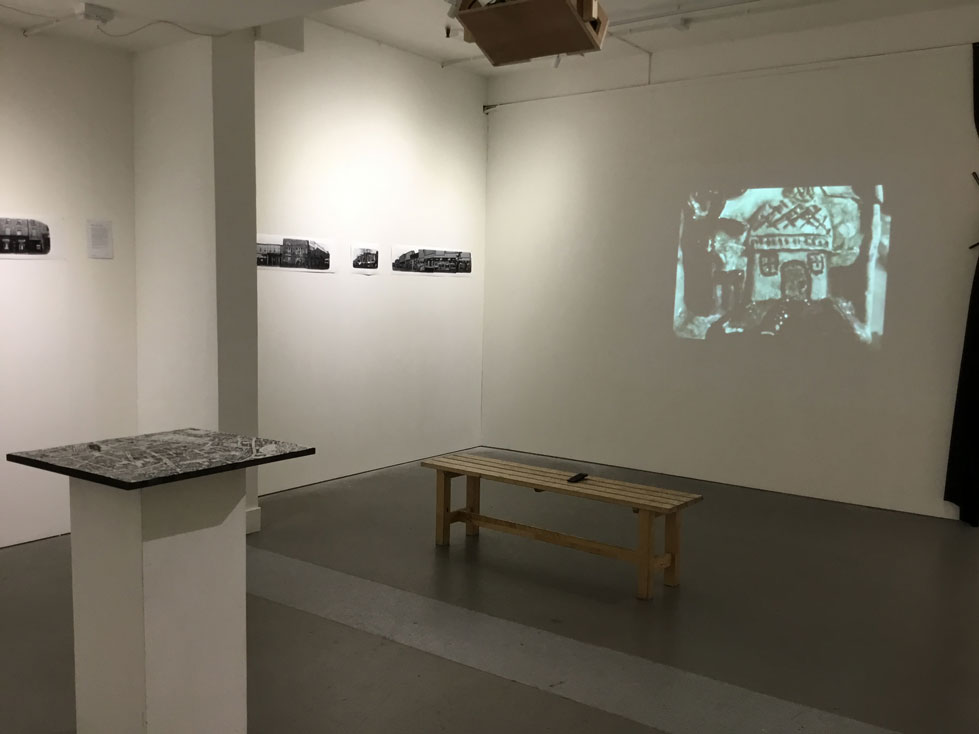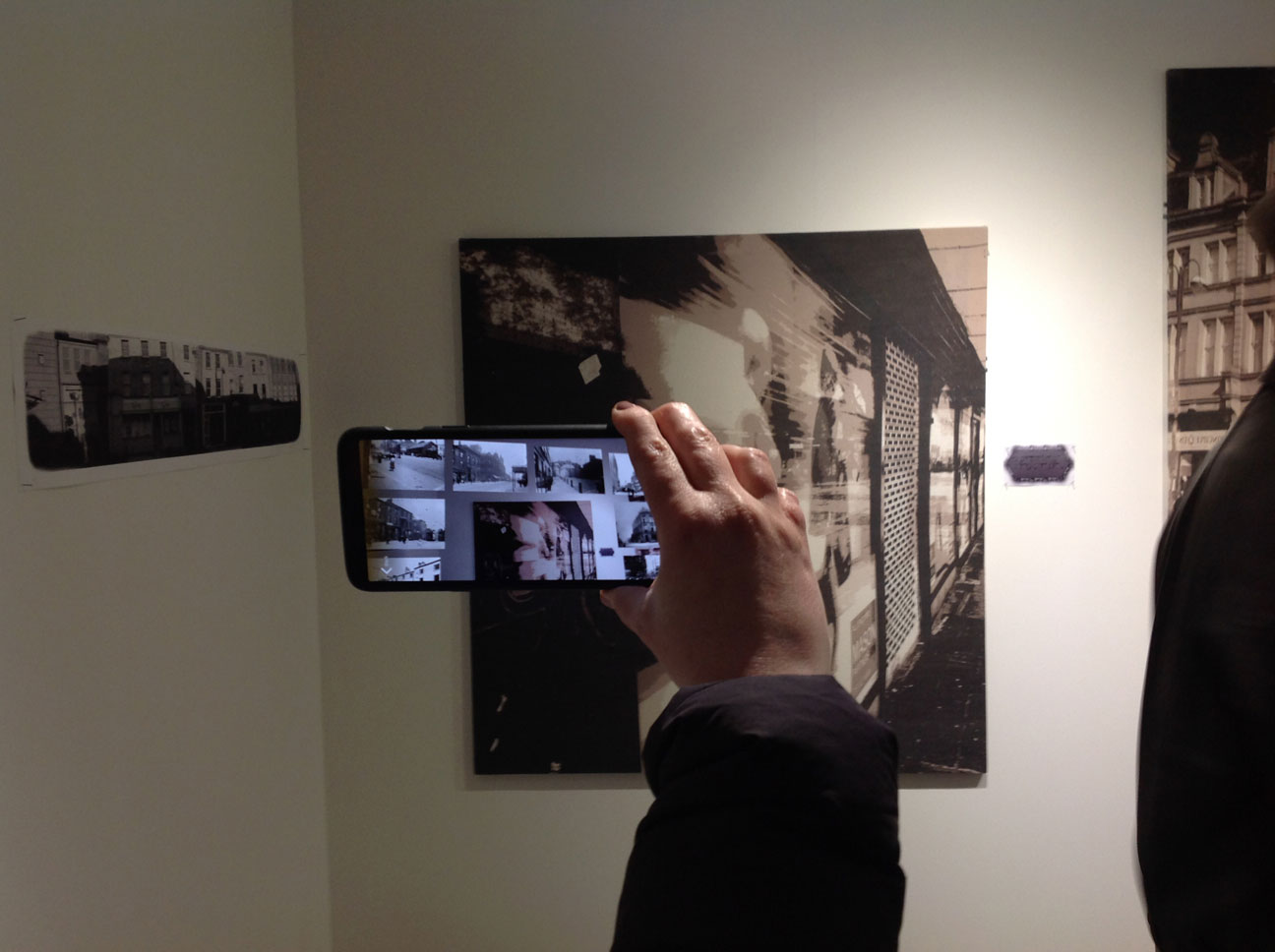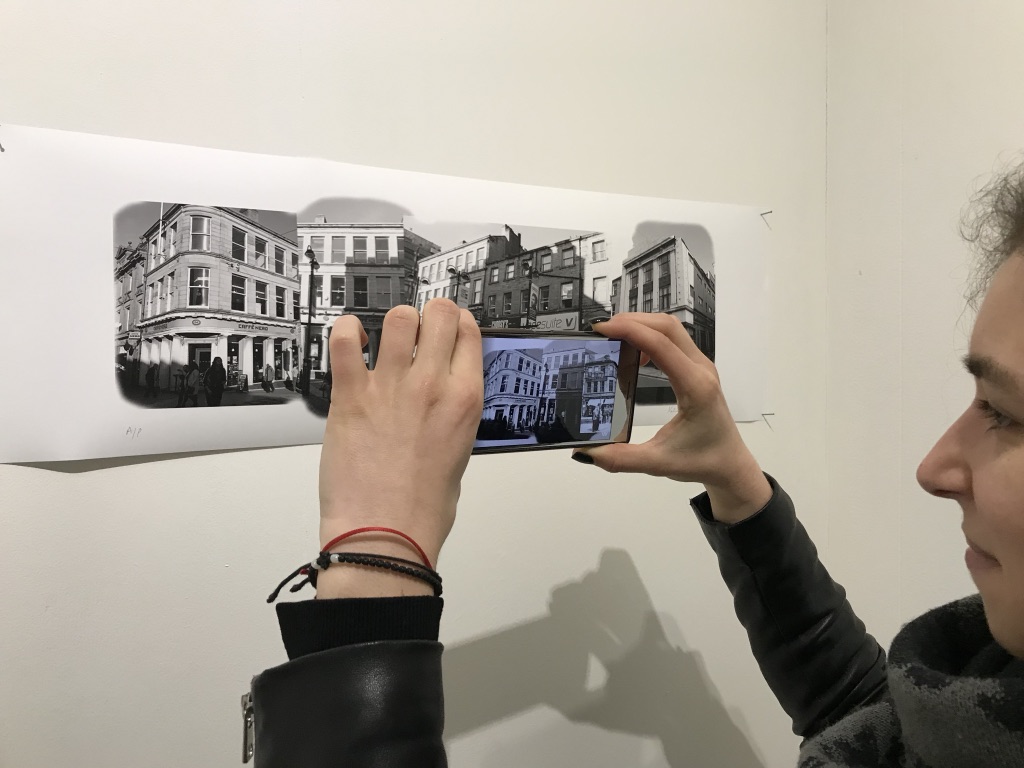What's this dull town to me?
About the exhibition
The departure point for the exhibition What’s this dull town to me? was the idea to use psychogeographic methods to explore the changes to Britain’s high streets. Psychogeography encourages attention to the emotional and cerebral responses to exterior environments. Andrew Taylor and Katrina Whitehead’s research focused on Huddersfield, combining their perspectives as someone raised in the town and an outsider, respectively. Taylor and Whitehead ask:
Re-viewing the subtle spatial codes and signals that surround us, how we can re-connect the liminal retail spaces with the town’s people to collectively discover a way to create a new and novel vision to a place? Can our collective ideas make a difference to how we map space, notice and experience spaces and regenerate our retail social spaces?
The exhibition extended existing relationships with augmented reality (AR) and software companies, SilverboxIT and PCT. The result was a ‘beta test’ presentation in Market Gallery that used AR to reveal archival imagery hidden within contemporary photography, and an AR heritage walk. Both artists used material from a range of archives in Huddersfield. Taylor’s works in the gallery used printing onto cloth to allude to Huddersfield’s past as a centre for textile production. Additional context was offered by including archival film footage, which you can see below.
Whitehead’s work for the exhibition was inspired by the French photographer JR, whose work in the urban environment includes giant photographic interventions onto scaffolding and buildings, and the writer Joan Didion. She documented her research journey as ‘chapbooks’. Chapbooks were small, cheap literature covering a range of topics, which were commonly sold on the streets of Britain in the 17th-19th centuries. Some of Whitehead's texts were included in the exhibition, and a limited edition booklet accompanied the show.
The exhibition was an opportunity to put on display the work of former University of Huddersfield MSc Interactive Multimedia student Graham Chaplin. Chaplin produced a fly-through scale model of empty Queensgate Market. Whitehead and Taylor extend their thanks to Chaplin’s family for giving permission for the work to be included.
Archival footage of Huddersfield included in the What's this dull town to me? exhibition.
About the researchers
Katrina Whitehead teaches on the Fashion Brand Marketing, International Fashion Buying Management and Fashion Creative Direction BA (Hons) programmes at the University of Huddersfield. Whitehead studied BA (Hons) Fine Art (Sculpture and Printmaking) at University of Leeds, and went on to be awarded an MA in Printmaking at Bradford School of Art, specialising in printing limited edition artists’ books. Her photo books were exhibited at various artists’ book fairs and her photographic prints have been exhibited at South Square Gallery in Bradford, Dean Clough Gallery in Halifax, De Grey Rooms in York and also the Czech Republic. Prior to teaching, Whitehead worked in the media industry for 19 years, including for the Press Association, working with reporters, photographers and editors of national newspapers.
As a multi-disciplinary artist, Whitehead is currently working on a practice-based PhD in the School of Art, Design and Architecture, researching creative non-fiction and the role of the image. She has previously influenced by mass media and in particular dark, satirical stories and celebrity culture.
Andrew Taylor is a Senior Lecturer in the Department of Fashion and Textiles University of Huddersfield. Through practice-based research and collaboration with academic and industry partners he uses interactive tools and innovative methods that advance traditional art and design approaches. His research is integral to his art, design, and learning and teaching practice.
Taylor’s recent work explores experimental approaches to learning and teaching, that attempts to make space for the diverse experience, and tacit skills of the learner through, and around the use of real spaces, and 3D virtual interactive tools and virtual environments. Both his individual and collaborative research has been published in art & design journals and he has presented widely at UK, and at international art, design & architecture conferences.
His industrial experience includes; design colourist, in-house studio and free-lance textile designer for interiors and fashion markets, and materials innovation and production of flexible and rigid PVC compounds for the automotive, medical, aeronautical, interiors, fashion accessories and footwear markets.


